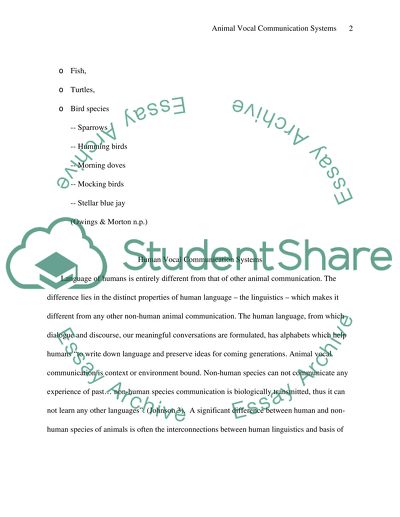Cite this document
(“What are the key differences between human speech and other animal Essay”, n.d.)
Retrieved from https://studentshare.org/biology/1475310-what-are-the-key-differences-between-human-speech
Retrieved from https://studentshare.org/biology/1475310-what-are-the-key-differences-between-human-speech
(What Are the Key Differences Between Human Speech and Other Animal Essay)
https://studentshare.org/biology/1475310-what-are-the-key-differences-between-human-speech.
https://studentshare.org/biology/1475310-what-are-the-key-differences-between-human-speech.
“What Are the Key Differences Between Human Speech and Other Animal Essay”, n.d. https://studentshare.org/biology/1475310-what-are-the-key-differences-between-human-speech.


